Introduction
These tools either drive your growth forward or drag it down when it matters most. That’s the conflict at the heart of every email platform choice.
MailerLite vs Mailchimp makes the contrast clear: MailerLite scales simply and affordably, while Mailchimp dazzles at first but hits you later with complexity and steep pricing jumps.
This guide compares them on pricing, automation, deliverability, and support, so you can choose the platform that fuels momentum instead of killing it.
Key Takeaways
What You Need to Know
- MailerLite focuses on simplicity, clean scaling, and affordable growth without sneaky upgrade cliffs or confusing bloat.
- Mailchimp impresses early with flashy tools but punishes you later with steep pricing jumps and complex workflows that slow down real growth.
- Deliverability, automation power, and user experience decide everything — not just how many templates you can drag and drop.
- Choosing wrong costs you momentum — the one currency entrepreneurs can’t afford to lose.
- The real winner isn’t the platform with the most features, it’s the one that multiplies your results without multiplying your headaches.
Disclaimer: I am an independent Affiliate. The opinions expressed here are my own and are not official statements. If you follow a link and make a purchase, I may earn a commission.
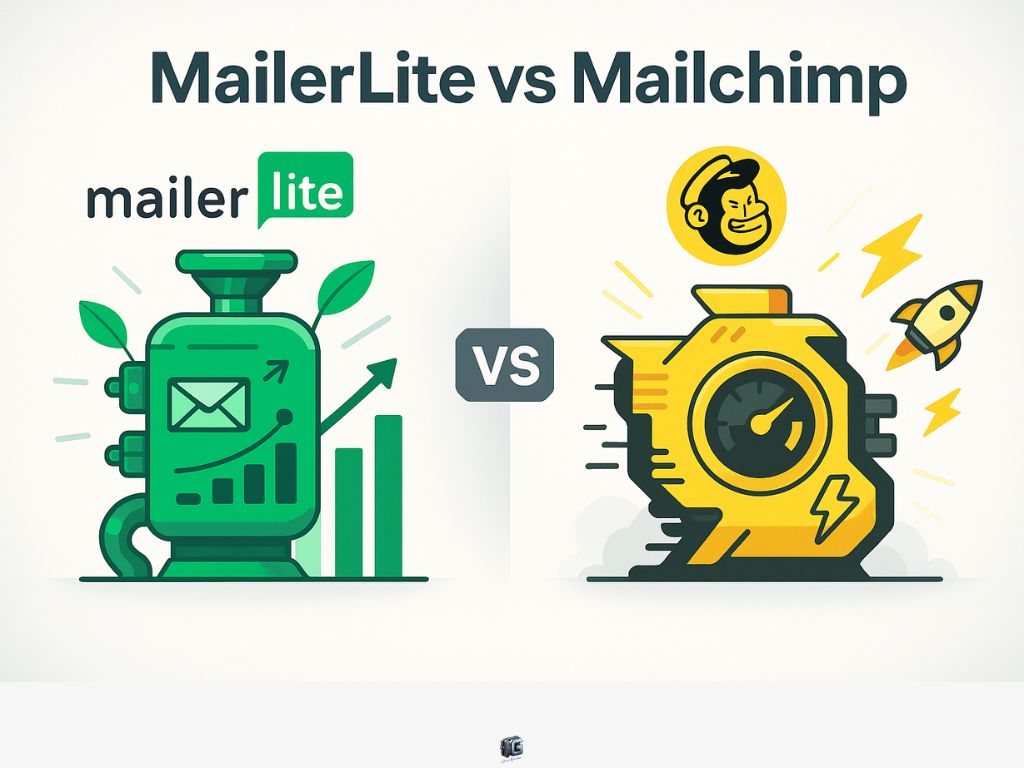
MailerLite vs Mailchimp Comparison at a Glance
This side-by-side comparison highlights the most up-to-date differences between MailerLite and Mailchimp. The biggest change in 2025 is MailerLite’s reduction of its free plan limit from 1,000 subscribers down to 500, which puts it on par with Mailchimp but with a far more generous monthly email allowance.
| Feature | MailerLite | Mailchimp |
|---|---|---|
| Free Plan | Up to 500 subscribers & 12,000 emails/month | Up to 500 subscribers & 1,000 emails/month |
| Paid Plans Start | ~$10/month (for 500 contacts, billed annually) | ~$13/month (for 500 contacts, billed annually) |
| Ease of Use | Clean, minimal interface; excellent for beginners | Feature-heavy; steeper learning curve, often cited as cluttered |
| Automation | Visual builder available on Free Plan; core sequences are accessible early | Advanced automations and customer journeys locked to Standard tier (or higher) |
| Landing Pages & Forms | Included on all plans with a dedicated, easy builder | Included with more customization, but setup tends to be slower |
| Deliverability | Strong inbox placement reputation due to strict account approval | Generally good, but performance can vary due to high volume on shared servers |
| Best For | Solo creators, coaches, and small businesses who value simplicity and budget | Larger marketing teams, high-volume eCommerce, and businesses needing deep integrations |
(Plan and feature details confirmed as of late 2025 — always verify directly on each platform’s site for the most current info.)
What this table shows clearly: MailerLite still wins on affordability, simplicity, and deliverability, while Mailchimp leans on feature depth and integrations that larger, more complex teams depend on.
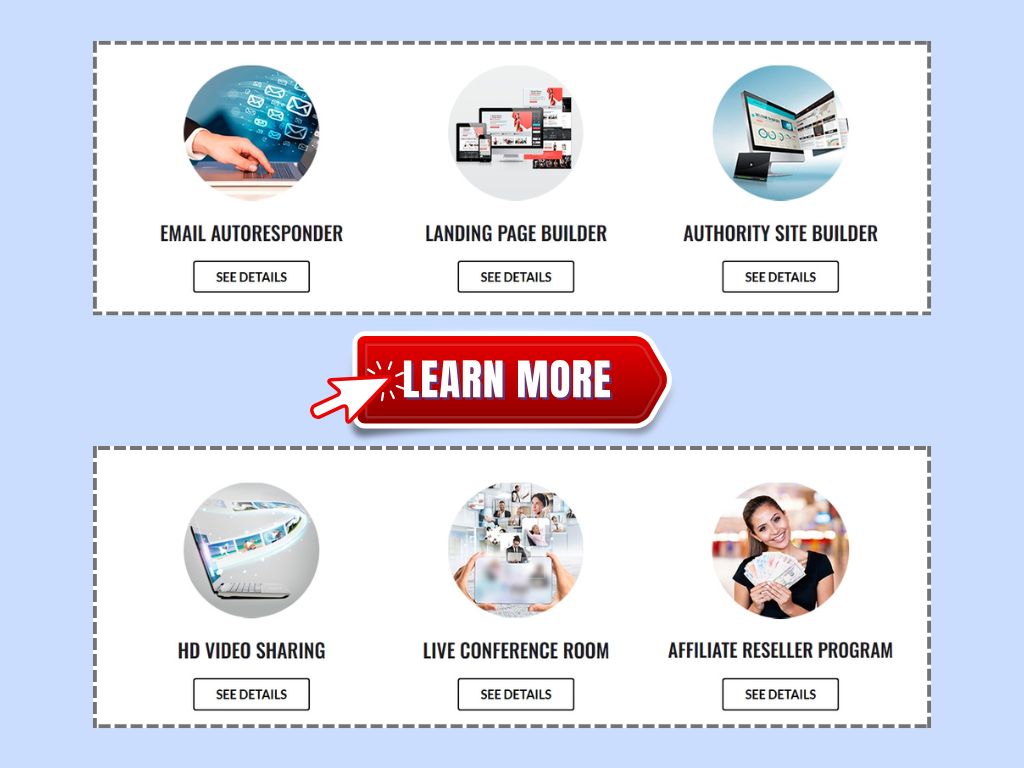
MailerLite vs Mailchimp: What Pricing Really Looks Like When You Scale
Pricing isn’t just about the first month — it’s about how much momentum you keep (or lose) when your list starts compounding. At a glance, MailerLite and Mailchimp look similar. But as soon as you pass a few hundred subscribers, the paths split hard.
| List Size | MailerLite (2025) | Mailchimp (2025) |
|---|---|---|
| 500 contacts | ~$10/month (or free, capped at 500) | ~$13/month (Essentials Plan) |
| 2,000 contacts | ~$21/month | ~$39/month (Essentials) |
| 5,000 contacts | ~$39/month | ~$69–$79/month (Standard, for advanced automations) |
| 10,000 contacts | ~$73/month | $100+/month (Standard or Premium tiers) |
(Rates approximate, based on late 2025 published pricing. Always check official sites for updates.)
The momentum cost:
MailerLite: Increases are predictable, transparent, and designed to scale without financial shocks. You can grow steadily without feeling “punished” for success.
Mailchimp: Starts with a friendly free plan but pushes you up fast — steep jumps once you need automations, more sends, or bigger lists. What feels cheap in year one can turn into hundreds per month before your list feels “big.”
The bottom line: MailerLite stays aligned with solo creators and growing businesses. Mailchimp prices itself for teams that are already big or willing to pay big to get there.
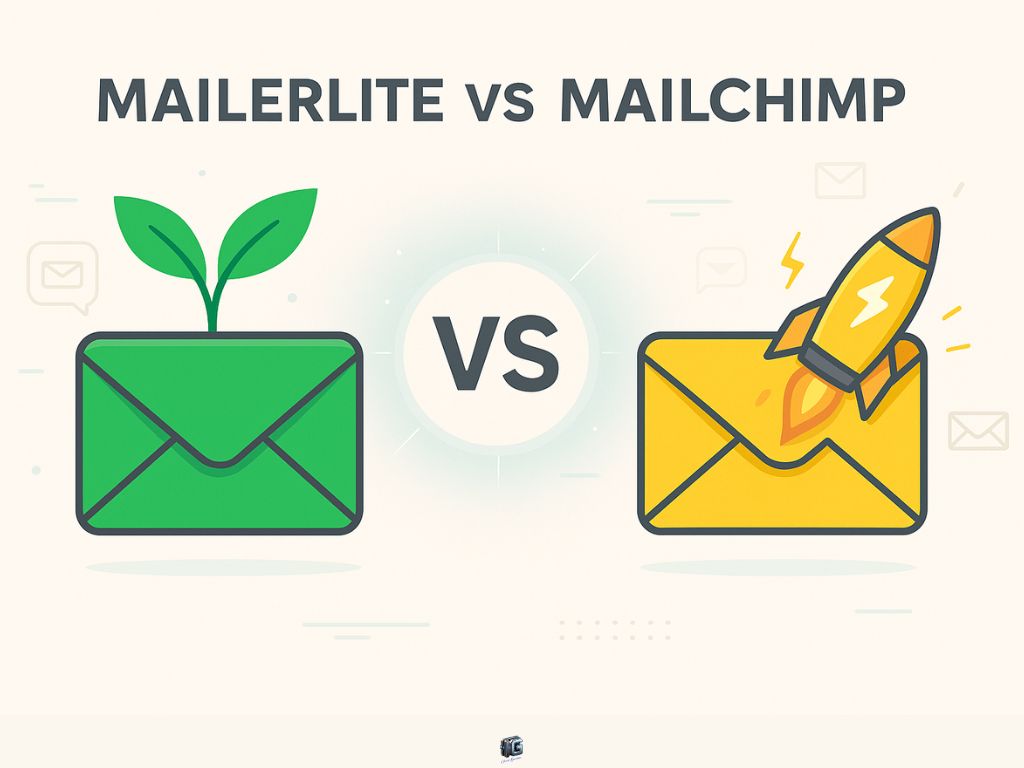
Automation, Forms & Landing Pages: Who Builds Revenue Faster?
Growth doesn’t wait for dashboard experts. The faster you launch your first form, your first landing page, and your first automation, the faster you start collecting leads and turning them into customers.
MailerLite keeps the process clean:
- Visual automation builder available even on the free plan
- Core sequences (welcome series, abandoned cart, re-engagement) set up in minutes
- Dedicated landing page and form builders built for speed, not complexity
- Integrates smoothly with website builders and e-commerce platforms without extra layers
Mailchimp takes the opposite approach:
- Customer Journey Builder unlocks deep, multi-branch automations but only on the Standard Plan ($20+/mo)
- Form and landing page tools exist, but customization often comes with extra menus, delays, and setup headaches
- More options = more time lost tweaking instead of launching
- Advanced integrations shine for larger teams, but overwhelm solo users and small businesses
The tradeoff is clear:
- If you value speed and simplicity, MailerLite clears the path so you can move fast and stay focused.
- If you crave deep customization and complex journeys, Mailchimp gives you power at the cost of higher pricing and slower execution.
Every extra hour spent configuring is an hour you’re not growing your list. In automation and forms, speed always beats clutter.

MailerLite vs Mailchimp: Deliverability and Real-World Email Performance
A stunning email means nothing if no one sees it. Landing in promotions or worse, spam is where campaigns quietly die. This is the invisible battle MailerLite and Mailchimp fight every time you hit “Send.”
MailerLite holds a strong reputation for deliverability:
- Consistently scores well in independent tests (EmailToolTester 2024: 94% inbox placement)
- Simple, lightweight templates avoid spam triggers
- Strict account approval process protects sender reputation across the platform
Mailchimp performs well, but with caveats:
- Typically posts solid inbox rates (EmailToolTester 2024: 90% inbox placement)
- Larger template libraries and dynamic content increase complexity which can introduce risk
- Huge shared infrastructure means performance can vary, depending on how other senders behave
The key difference:
- MailerLite wins on consistency: lightweight designs and tighter control mean fewer surprises.
- Mailchimp offers more freedom, but with that freedom comes a higher risk of landing in the wrong folder.
Deliverability isn’t optional. If your emails don’t land, your growth stalls before it starts. Pick the tool that gets you in front of your audience every time.
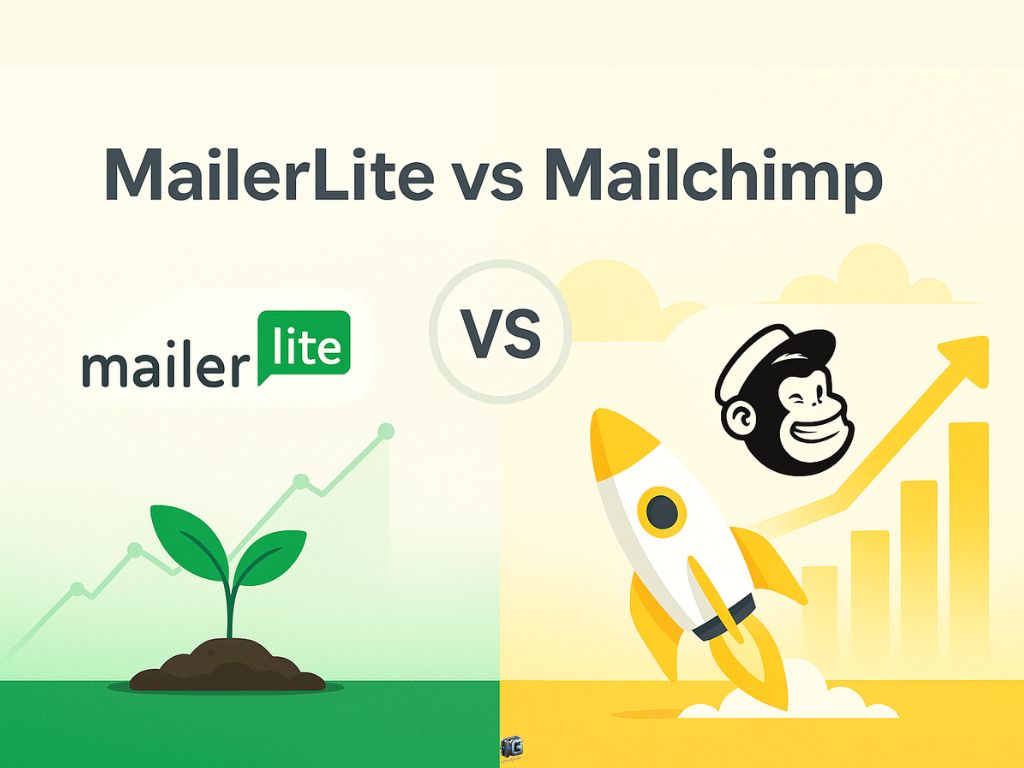
MailerLite vs Mailchimp: Customer Support When It Matters Most
Everything feels fine… until it doesn’t. A form breaks. An automation stalls. An email sequence stops firing two days before a launch. That’s when you discover whether your platform has your back or whether you’re on your own.
MailerLite keeps support lean but accessible:
- 24/7 email support across all plans, including Free
- Live chat available on all paid plans (no expensive upgrade required)
- Knowledge base written for non-technical entrepreneurs: step-by-step guides, video tutorials, quick how-tos
- Active user community and official Facebook group where staff regularly jump in to answer questions
- Reported average response time: within a few hours, even for small accounts
Mailchimp runs support through a tiered system:
- Free plan: email support only for the first 30 days, then you’re locked out
- Essentials plan (~$13/mo): includes ongoing email support, but no live chat
- Standard plan (~$20+/mo): unlocks live chat support
- Premium plan (~$300+/mo): adds phone support, but only for high-budget accounts
- Knowledge base is massive, but built for enterprise-level setups small users often find it overwhelming
- Community forum exists, but staff engagement is inconsistent
The real difference:
- MailerLite treats every user like a paying customer: access to real people, clear answers, and no gatekeeping behind high-tier plans.
- Mailchimp builds walls around support: the smaller your budget, the less help you get which is exactly when you often need it most.
Who this matters for:
- Solo creators and small businesses: MailerLite wins hands down affordable plans and real-time chat mean you’re never stranded.
- Agencies and enterprise teams: Mailchimp’s premium support (chat + phone) can be valuable if your budget stretches that high and your campaigns justify the spend.
When campaigns break, momentum doesn’t just slow it dies. Support isn’t a nice-to-have, it’s insurance against losing weeks of growth. Choose the platform that respects your urgency, not the one that makes you wait your turn.

Common Traps: Where Marketers Regret Their Choice
Every platform feels exciting at the start. Fresh dashboards, shiny templates, the promise of effortless growth. But months later, the cracks show and this is where most marketers regret their choice.
Mailchimp’s Traps (and How They Hit You):
- Pricing cliffs: The free plan feels generous — until you grow past 500 contacts. Then every meaningful feature (multi-step automations, A/B testing, analytics) forces an upgrade. Costs climb in chunks, not smooth steps. It’s common to see small businesses paying $100+ before they’ve even hit 5,000 subscribers.
- Complexity creep: Mailchimp’s power is real, but so is the overhead. Even simple campaigns can turn into hours of configuration. More toggles, more nested menus, more second-guessing. Momentum drains quietly while competitors are already hitting send.
- Enterprise bias: Features, documentation, and support are optimized for bigger teams. Solo founders and small businesses often feel like they’re forcing a massive tool to do something simple.
MailerLite’s Traps (and What to Expect):
- Free plan ceiling: With the 2025 reduction to just 500 subscribers, the free plan works only as a testing ground. If you plan to scale at all, budget for a paid tier early. The good news: upgrades are transparent and affordable.
- Automation limits: Visual workflows are excellent, but advanced triggers (like ecommerce-based automations) require higher tiers or integrations. Not a dealbreaker, but something to plan for if you rely on complex funnels.
- Strict compliance: MailerLite enforces tough anti-spam rules. Importing large or old lists can trigger account freezes until you prove quality. This protects deliverability, but it can catch new users off guard.
The real takeaway:
- With Mailchimp, the trap is in the climb. Costs and complexity escalate as you grow, turning early excitement into long-term friction.
- With MailerLite, the trap is in the ceiling. The free plan gets you started, but you’ll outgrow it fast. The upside: when you do upgrade, pricing stays predictable and manageable.
How to avoid these traps:
Always ask: Does this tool get harder or easier the bigger I grow? That’s the trap that matters most.
If you’re testing the waters, use MailerLite’s free plan knowing it’s a launchpad, not a forever home.
If you’re considering Mailchimp, map your growth costs upfront. Don’t just compare entry-level pricing calculate what 5,000, 10,000, and 20,000 contacts will cost you.

MailerLite vs Mailchimp: Who Should Really Use Which Platform?
Not every business fights the same battles. Some need speed to launch fast. Others need scale to handle complex campaigns across multiple brands. Here’s where each platform really fits.
MailerLite is best for:
- Solo creators and coaches → You get a clean interface, fast setup, and affordable scaling. Perfect if your business model relies on list-building and nurturing without drowning in dashboards.
- Course builders and digital educators → Simple automations and landing pages make it easy to run evergreen funnels without paying enterprise-level prices.
- Small businesses and startups → The free plan gives you breathing room at launch, and the predictable upgrades keep your budget safe as you grow.
- Agencies on a budget → With affordable multi-account setups and built-in features like landing pages and pop-ups, you can manage multiple clients without stacking expensive tools.
Mailchimp is best for:
- Larger marketing teams → When multiple people are managing complex customer journeys, Mailchimp’s depth (segmentation, predictive analytics, ecommerce integrations) becomes valuable.
- High-volume eCommerce stores → If you need advanced product recommendations, cart abandonment flows, and deep store integrations, Mailchimp provides the infrastructure.
- Enterprises or brands with layered campaigns → Mailchimp’s ecosystem supports global campaigns, A/B testing at scale, and enterprise-level reporting but only if the budget matches.
- Businesses already locked into the ecosystem → If your team already runs ads, analytics, or content through Mailchimp, switching may cost more than it saves.
The real choice:
- MailerLite wins if you want speed, affordability, and simplicity that scales.
- Mailchimp wins if you need advanced segmentation, integrations, and are willing to pay for enterprise-level complexity.
The smartest move isn’t picking the tool with the longest feature list. It’s picking the one that matches how you actually grow today, tomorrow, and when the scaling gets serious.
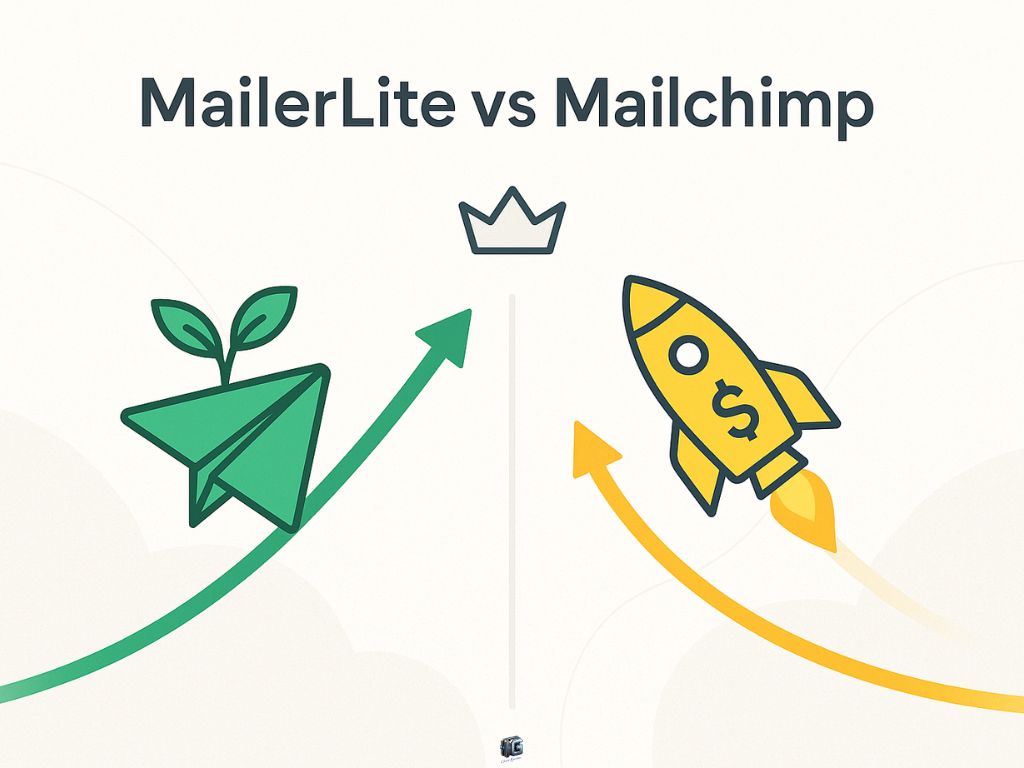
Conclusion: Choose the Tool That Grows With You, Not Against You
Your email platform isn’t just software, it’s a silent partner in every launch, every funnel, every dollar you earn online.
MailerLite and Mailchimp both promise growth, but they deliver it differently.
- MailerLite: built for speed, simplicity, and predictable scaling.
- Mailchimp: built for bigger teams, deeper features, and higher budgets.
The danger isn’t picking a “bad” tool. It’s picking one that stalls your momentum just when you need it most.
If you want a platform that fuels growth without draining time or budget, start with MailerLite. If you need enterprise-level complexity and are ready to pay for it, Mailchimp has the depth.
If you’re serious about scaling faster, smarter, and cleaner there’s an even bigger shortcut waiting for you.
- A way to build massive lists.
- Launch landing pages in minutes.
- And lock in 20,000 subscribers for less than most pay just to “start.”
⇒See the smarter platform serious entrepreneurs are switching to now.
Your future subscribers are already waiting. Don’t leave them or your momentum hanging.
Before you choose, see our complete Constant Contact vs Mailchimp analysis.
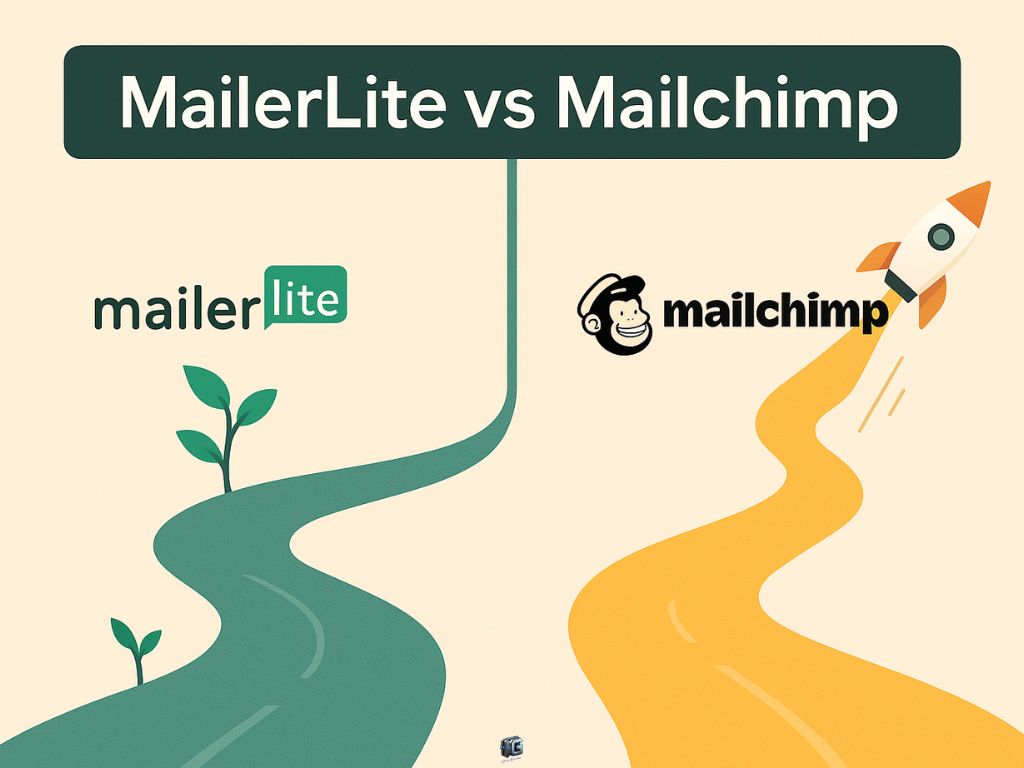
Frequently Asked Questions About MailerLite vs Mailchimp
Is Mailchimp really better than MailerLite for serious marketers?
Depends on your mission. Marketers running complex multi-brand empires might squeeze more out of Mailchimp’s heavier feature set. Most entrepreneurs, coaches, and course creators build faster and profit more consistently with MailerLite’s simpler ecosystem.
What happens when I outgrow MailerLite’s free plan?
Upgrading feels smooth, not painful. MailerLite’s paid plans stay affordable, predictable, and designed for growth, no financial shocks as you scale.
Do MailerLite emails land in spam folders more often?
No. Deliverability is one of MailerLite’s strengths. Their lightweight templates and strict account approval process protect sender reputation and keep inbox rates high.
Can you switch platforms easily later if you pick wrong?
Switching is possible, but expect turbulence. Importing lists, rebuilding automations, and learning a new interface costs time and momentum. Choosing correctly the first time saves far more.
Why does Mailchimp cost so much more as you grow?
Because their pricing rewards staying small and penalizes success. The moment your list grows, new fees pile up. More automations? Higher bill. Deeper segmentation? Bigger monthly jump. Scaling success often comes with scaling headaches inside Mailchimp.
Which platform is better for beginners?
MailerLite. Its interface is simpler, automation is available on the free plan, and scaling costs are predictable. Mailchimp offers more features, but the learning curve and upgrade cliffs frustrate many beginners.
MailerLite vs Mailchimp pricing compared which saves more long term?
MailerLite almost always wins on cost efficiency. Mailchimp starts cheap but escalates quickly once you need automation or a bigger list. Over 5,000 contacts, Mailchimp can cost 2–3x more than MailerLite for similar functionality.
Which is better for eCommerce businesses?
Mailchimp. Its deeper integrations with Shopify, WooCommerce, and predictive product recommendations make it stronger for high-volume online stores. MailerLite covers the basics and works well for smaller shops, but Mailchimp’s advanced ecommerce features give it an edge at scale.
4 Comments
Constant Contact vs Mailchimp: The Shocking 2025 Winner - Ismel Guerrero. · April 26, 2025 at 10:31 pm
[…] Read our full MailerLite vs Mailchimp comparison. […]
Flodesk vs Mailchimp: The Brutal Truth No One Tells You - Ismel Guerrero. · April 27, 2025 at 11:02 pm
[…] Check out our brutally honest MailerLite vs Mailchimp comparison for another eye-opening […]
ConvertKit vs Mailchimp: Smarter Choice for Creators in 2025 - Ismel Guerrero. · April 29, 2025 at 12:09 pm
[…] Looking for other smart options? See how MailerLite compares to Mailchimp. […]
SendGrid vs Mailchimp: Which One Actually Delivers? - Ismel Guerrero. · May 4, 2025 at 6:48 pm
[…] Want more alternatives in the lightweight email space? Explore the MailerLite vs Mailchimp comparison. […]